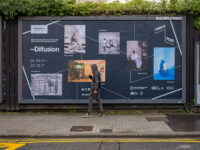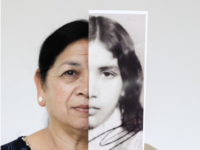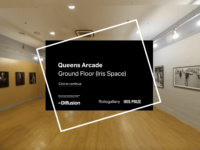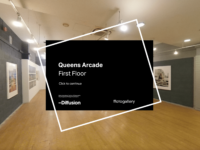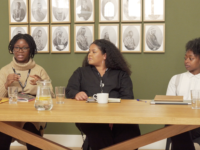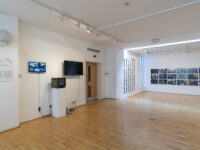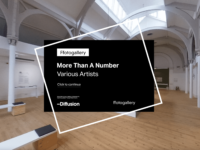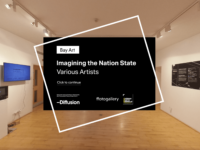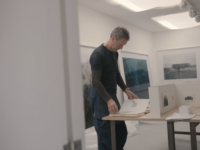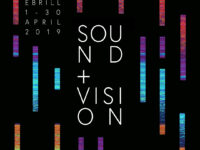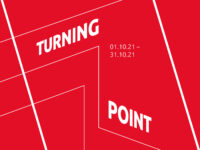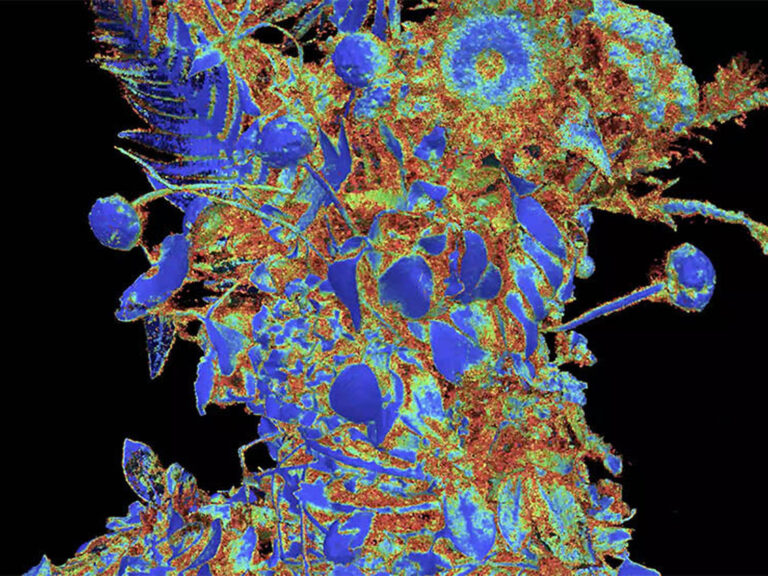Highlights from Diffusion Festival 2019: Sound+Vision
Turning Point: Diffusion Festival 2021 looks towards a post-pandemic future by providing a new model of collaboration, and a platform for new artistic voices and culturally diverse experiences. Over the month of October 2021 photography and photographic arts events, workshops and community projects will be presented in Wales, but will have an international reach and impact. This year, after the success and resilience demonstrated by the arts in the virtual world, Diffusion Festival 2021 will combine online and physical co-creation and presentation of work.
Here we present highlights from the fourth biennial edition of Diffusion Festival, held in April 2019: Sound+Vision, to bridge the gap between the 2019 and 2021 editions of the festival, and the absence of Diffusion Festival 2020.
Diffusion 2019’s theme, Sound+Vision, explored the relationship between sound and music, with photography and lens-based media. One of the festival’s focuses was on the latest applications of VR, the expansion of digital technologies, and built upon collaborations between artists, media producers and companies working in Wales, the UK, Europe, Asia, North America and the Middle East.
X-Ray Audio, an installation by The Bureau of Lost Culture, told the story of daring communities of bootleggers in the Soviet Union during the cold war era. The Soviet Union banned the import of American music and media. Instead of accepting these strict prohibitions, bootleggers used music as resistance: by building DIY recording machines that pressed forbidden, American jazz and rock’n’roll onto used and discarded X-ray film, which they then cut into handmade vinyl records. The exhibition included a live event, where the musician Gruff Rhys (Super Furry Animals) performed a selection of songs that were then cut live onto an x-ray record.
The acclaimed composer and sound artist John Rea delved into the sound archives of the St Fagans National History Museum to create his audio-visual installation Atgyfodi. The images, found and specially filmed, were collaged with surround-sound contemporary music composition and original field recordings that were made in locations, and of people, of iconic and symbolic importance, such as the original, historic buildings of the Museum.
Atgyfodi was inspired by the deep-rooted Welsh musical tradition, of songs and stories shared orally by real people. The compositional approach to the music was influenced by the textures and sounds of these lives: the melodies, musicality and poetry of the spoken word guiding the process. The composition purposefully left space for re-interpretation and improvisation by contemporary musicians, in respect to the old traditions. The installation was a collaborative effort that featured the BBC National Orchestra of Wales, and traditional instruments Crwth, Pibgorn, and fiddle and whistle performed by Cass Meurig and Patrick Rimes. Filmed and still images were aided by Huw Talfryn Walters. The completed work was gifted to the archive of The National Museum of History at St Fagans.
Richard Jones’ The Coal Face was a study of the Welsh coal industry, seen through the face and appearances of the workforce. Wales was once a world leader in coal production with over 600 collieries in South Wales alone. Today, all but a few traces of our recent history have been wiped away, with almost all mines demolished. The valley towns and the workface that inhibit them are a shadow of their once illustrious past. Richard Jones believes the faces of these men and their stories are the key to our industrial past.
Colliers from the Rhondda, The Rymney, The Taff and Ebbw sat for the intense studio sessions required to create the 3-D portraits, made up of 200+ images taken by high resolution cameras that mapped the faces of the models, which were then fed into photogrammetry software that works to create the final 3D images. The images were accompanied by John Rea’s soundscape, featuring recordings of the miners’ voices and original field recordings taken from the regions these men called home.
And finally, another exciting highlight of Diffusion Festival 2019 was an exhibition by the Finnish film director, Jonna Kina: Foley Objects. For the installation, Jonna Kina collected objects used by various foley artists and sound designers to create sound effects for movies. Foley Objects presented a curious and humurous collection of images as both a photographic archive of sounds, and an ironic twist between documentation and absurd playfulness. For example, did you know that a roll of tin foil can be used to reproduce the sound of fire?
John Rea’s latest work, Parade, and Richard Jones’ <Truth DeQay> will be exhibited at Diffusion Festival 2021.
